Назар аударыңыз. Бұл материалды сайт қолданушысы жариялаған. Егер материал сіздің авторлық құқығыңызды бұзса, осында жазыңыз. Біз ең жылдам уақытта материалды сайттан өшіреміз
Жақын арада сайт әкімшілігі сізбен хабарласады

Бонусты жинап картаңызға (kaspi Gold, Halyk bank) шығарып аласыз


Solution 11 сынып кітабы бойынша құрылған 1 тоқсан ҚМЖ жинағы
Дипломдар мен сертификаттарды алып үлгеріңіз!


Материалдың толық нұсқасын
жүктеп алып көруге болады
Short term plan: term 1
|
Unit 1: Making connections in biology lesson 1 |
School: |
||
|
Date: |
Teacher name: |
||
|
Grade: 11 |
Number present: |
absent: |
|
|
Lesson title |
Food science |
||
|
Learning objectives |
11.1.8.1 - develop intercultural awareness through reading and discussion 11.3.2.1 - ask and respond with appropriate syntax and vocabulary to open-ended higher-order thinking questions on a range of general and curricular topics, including some unfamiliar topics 11.3.7.1 - use appropriate subject-specific vocabulary and syntax to talk about a range of familiar and some unfamiliar general and curricular topics |
||
|
Lesson objectives |
Learners will be able to: -Describe what a balanced diet is and why it is important. -Identify the different food groups and place foods into the correct groups. |
||
|
Plan |
|||
|
Stages / Time |
Teachers’ actions |
Students’ actions |
Assessment criteria |
Resources |
|
Start
5 min |
Organization moment 1.Greeting. Ask about the weather. The teacher sets the lesson objectives, letting students know what to anticipate from the lesson. Warm-up Creating a positive psychological environment Lead – In
What do food scientists do?Do Food Science protect us or our health? |
Students' attention is drawn to the lesson. Students discuss the pictures in pairs. Determines the topic and aim of the lesson Students say different words from the picture Students look at the picture and discuss Answers: S |
Good job! Assessment criteria -Identify detailed information in extended conversation with support Descriptor: - work in pairs - Total: 1 point |
Pictures Student’s book |
|
Main part 30 min 8 min |
Ex:1 P:4 Focus attention on the eat well plate and explain that it is a visual representation of the type of food we should eat for a healthy, balanced diet. Ex: 2 P:4 Focus attention on the phrases. Check meaning and pronunciation. Check answers as a class. • Read out the sentences. Give students time to complete and find one food on the eat well plate that contains each thing in the list. Ask various students to tell the class. In differentiation part «Flexible pace learning» method was used to give students a choice in order to make them interested in learning process. Conclusion during the lesson some tasks differentiated by outcomes of the students and by their abilities. |
Students look at the “Eat well” plate. What does it suggest we eat the most / least of? Answers: The most vegetables and fruits. The least foods high in fat and sugar Students complete the information in the texts with the words below. Answers: 1 wholegrain 2 pulses // poultry 3 poultry / pulses 4 processed foods 5 saturated fat 6 fizzy drinks 7 dairy products Students look at the list of nutrition words below. Find one food on the eat well plate that contains each thing in the list. Answers: Additives – baked beans, tinned chickpeas, biscuits, fizzy drinks Calcium – cheese, milk, yoghurt Calories – all foods |
Descriptor: - answer the question Total: 1 point Descriptor: - complete the information Total: 1 point Differentiation – how do you plan to give more support? How do you plan to challenge fast finishers? |
Cards Worksheets |
|
End 2 min |
FEEDBACK Learners provide feedback on what they have learned at the lesson. |
|
Students evaluate each other and encourage classmate with phrases like: Well done! Brilliant! Good job! I like it! . |
Poster
|
Short term plan: term 1
|
Unit 1: Making connections in biology lesson 2 |
School: |
||
|
Date: |
Teacher name: |
||
|
Grade: 11 |
Number present: |
absent: |
|
|
Lesson title |
The Kazakhstan food quiz. |
||
|
Learning objectives |
11.2.1.1 - understand the main points in unsupported extended talk on a wide range of general and curricular topics, including talk on a growing range of unfamiliar topics 11.3.2.1 - ask and respond with appropriate syntax and vocabulary to open-ended higher-order thinking questions on a range of general and curricular topics, including some unfamiliar topics 11.6.12.1 - use a wide variety of past modal forms to express appropriate functions; use a variety of near modal structures including supposed to, bound to, due, willing to on a wide range of general and curricular topics |
||
|
Lesson objectives |
Learners will be able to:
|
||
|
Plan |
|||
|
Stages / Time |
Teachers’ actions |
Students’ actions |
Assessment criteria |
Resources |
|
Start
5 min |
Organization moment 1.Greeting. Ask about the weather. The teacher sets the lesson objectives, letting students know what to anticipate from the lesson. Warm-up Creating a positive psychological environment Lead – In
|
Students' attention is drawn to the lesson. Students discuss the pictures in pairs. Determines the topic and aim of the lesson Students say different words from the picture Studentslook at the picture and discuss Who is in this picture? Do they know him? Answers: S |
Formative Assessment
Good job! Assessment criteria -Identify detailed information in extended conversation with support |
Pictures Student’s book |
|
Main part 30 min 8 min |
Ex: 4 P:5 • Read out the questions and elicit students’ guesses in answer to them. Work in pairs. Think about your own diets. How do they compare to the advice on the plate? Ex: 5 P:5 • Refer students to the quiz at the books and give them time to look up the meanings of the words given in the quiz. Complete the quiz with the correct form of the highlighted verbs from the text in exercise 2. Do the quiz in pairs Ex: 6 P:5 •Listen the sentences. Give students time to listen to and match through the text and find out which sentences. • Ask various students to tell the class and correct the false sentences. Listen to four people talking about food. Match the speakers with what they say. There is one extra sentence Ex: 7 P:5 • Allow students time to read the recycle box and then complete the sentences with the correct. Read the Recycle! box. Then complete the sentences with the correct form of must, mustn’t, have to and don’t have to. Conclusion during the lesson some tasks differentiated by outcomes of the students and by their abilities. |
Studentswork in pairs. Think about your own diets. How do they compare to the advice on the plate? Answer: Students own answer Students complete the quiz with the correct form of the highlighted verbs from the text in exercise 2. Do the quiz in pairs Answers: 1 contains 2 consume 3 reduce 4 produce 5 digest 6 boost Students Listen to four people talking about food. Match the speakers with what they say. There is one extra sentence Answers: Speaker 1 D Speaker 2 E Speaker 3 A Speaker 4 C Students Read the Recycle! box. Then complete the sentences with the correct form of must, mustn’t, have to and don’t have to. Answers: 1 must / mustn’t 2 has to / doesn’t have to 3 had to 4 don’t have to |
Descriptor: - work in pairs. Total: 1 point Descriptor: - complete the quiz Total: 1 point Descriptor: - Listen to four people talking about food Total: 1 point Differentiation – how do you plan to give more support? How do you plan to challenge fast finishers? |
Cards Worksheets |
|
End 2 min |
FEEDBACK Learners provide feedback on what they have learned at the lesson. |
|
Students evaluate each other and encourage classmate with phrases like: Well done! Brilliant! Good job! I like it! . |
Poster
|
Short term plan: term 1
|
Unit 1: Making connections in biology lesson 3 |
School: |
||
|
Date: |
Teacher name: |
||
|
Grade: 11 |
Number present: |
absent: |
|
|
Lesson title |
The passive |
||
|
Learning objectives |
11.3.5.1 - interact with peers to make hypotheses and evaluate alternative proposals on a range of familiar and some unfamiliar general and curricular topics 11.4.3.1 - skim a range of lengthy texts with speed to identify content meriting closer reading on a range of more complex and abstract, general and curricular topics 11.6.7.1 - use a wide variety of simple perfect active and passive forms and a variety of perfect continuous forms on a wide range of general and curricular topics |
||
|
Lesson objectives |
Learners will be able to:
|
||
|
Plan |
|||
|
Stages / Time |
Teachers’ actions |
Students’ actions |
Assessment criteria |
Resources |
|
Start
5 min |
Organization moment 1.Greeting. Ask about the weather. The teacher sets the lesson objectives, letting students know what to anticipate from the lesson. Warm-up Creating a positive psychological environment Lead – In
|
Students' attention is drawn to the lesson. Students discuss the pictures in pairs. Determines the topic and aim of the lesson Students say different words from the picture Students look at the grammar table and discuss Answers: Students own answer
|
Formative Assessment
Good job! Assessment criteria -Identify detailed information in extended conversation with support Descriptor: - work in pairs - Total: 1 point |
Pictures Student’s book |
|
Main part 30 min 8 min |
Ex:1 P:6
Ex: 2 P:6 ٠Consolidate vocabulary from the text. Read the text. Does it mention your ideas from exercise 1?
Ex: 3 P:6
Conclusion during the lesson some tasks differentiated by outcomes of the students and by their abilities. |
Studentswork in pairs. In what ways do you think infections are connected to hygiene? Answers: Students own answer Students read the text. Does it mention your ideas from exercise 1? Answers: Students own answer Students find passive examples of tenses in the text. Answers: A is (still) affected B haven’t been eliminated, have been reduced C were being killed D will be challenged, will be transmitted E is being improved F were adopted G had been taught |
Descriptor: - work in pairs. Total: 1 point Descriptor: - read the text. Total: 1 point Descriptor: - read the Learn this! box Total: 1 point Differentiation – how do you plan to give more support? How do you plan to challenge fast finishers? |
Cards Worksheets |
|
End 2 min |
FEEDBACK Learners provide feedback on what they have learned at the lesson. |
|
Students evaluate each other and encourage classmate with phrases like: Well done! Brilliant! Good job! I like it! . |
Poster
|
Short term plan: term 1
|
Unit 1: Making connections in biology lesson 4 |
School: |
||
|
Date: |
Teacher name: |
||
|
Grade: 11 |
Number present: |
absent: |
|
|
Lesson title |
The passive |
||
|
Learning objectives |
11.3.5.1 - interact with peers to make hypotheses and evaluate alternative proposals on a range of familiar and some unfamiliar general and curricular topics 11.4.3.1 - skim a range of lengthy texts with speed to identify content meriting closer reading on a range of more complex and abstract, general and curricular topics 11.6.7.1 - use a wide variety of simple perfect active and passive forms and a variety of perfect continuous forms on a wide range of general and curricular topics |
||
|
Lesson objectives |
Learners will be able to:
|
||
|
Plan |
|||
|
Stages / Time |
Teachers’ actions |
Students’ actions |
Assessment criteria |
Resources |
|
Start
5 min |
Organization moment 1.Greeting. Ask about the weather. The teacher sets the lesson objectives, letting students know what to anticipate from the lesson. Warm-up Creating a positive psychological environment Lead – In
|
Students' attention is drawn to the lesson. Students discuss the pictures in pairs. Determines the topic and aim of the lesson Students say different words from the picture Students look at the grammar table and discuss Answers: Students own answer
|
Formative Assessment
Good job! Assessment criteria -Identify detailed information in extended conversation with support Descriptor: - work in pairs - Total: 1 point |
Pictures Student’s book |
|
Main part 30 min 8 min |
Ex: 4 P:6
Ex: 5 P:6
Ex: 6 P:6
Students check their answers around the class Conclusion during the lesson some tasks differentiated by outcomes of the students and by their abilities. |
Students read the Learn this! box. Complete the rules. Answers: 1 be 2 past participle 3 subject 4 by 5 present continuous Students rewrite the sentences in the passive. Match them with rules in the Learn this Answers: 1 I have been examined by a doctor and (have been) told to rest at home – 2 2 It was in the 19th century that anaesthetics were invented – 3a 3 more advances in medicine are being made – 4 4 the wound will be sewn now and the stitches will be removed next week – 3b 5 the fact that many disease could be cured by vitamins was discovered by Kazimiers Funk, a Polish scientist Students Rewrite the underlined text in the passive. Answers: 1 it is known as the Black Death 2 the plague was bought from Asia to Europe by rats / the plague was brought by rats from Asia to Europe 3 millions of people were killed (by the disease) 4 crops had been ruined by bad weather for years. 5 thousands had been left hungry 6 the cities were being filled by frightened people 7 they were quickly infected by coughs and sneezes 8 we are still fascinated by this terrible event |
Descriptor: - Complete the rules. Total: 1 point Descriptor: -. rewrite the sentences in the passive Total: 1 point Descriptor: - Rewrite the underlined text in the passive Total: 1 point Differentiation – how do you plan to give more support? How do you plan to challenge fast finishers? |
Cards Worksheets |
|
End 2 min |
FEEDBACK Learners provide feedback on what they have learned at the lesson. |
|
Students evaluate each other and encourage classmate with phrases like: Well done! Brilliant! Good job! I like it! . |
Poster
|
Short term plan: term 1
|
Unit 1: Making connections in biology lesson 5 |
School: |
||
|
Date: |
Teacher name: |
||
|
Grade: 11 |
Number present: |
absent: |
|
|
Lesson title |
Keeping fit ex 1-5 |
||
|
Learning objectives |
11.2.8.1 - recognize inconsistencies in argument in extended talk on a range of general and curricular subjects, including some unfamiliar topics 11.3.3.2 - explain and justify own and others’ point of view on a range of general and curricular topics, including some unfamiliar topics |
||
|
Lesson objectives |
Learners will be able to:
|
||
|
Plan |
|||
|
Stages / Time |
Teachers’ actions |
Students’ actions |
Assessment criteria |
Resources |
|
Start
5 min |
Organization moment 1.Greeting. Ask about the weather. The teacher sets the lesson objectives, letting students know what to anticipate from the lesson. Warm-up Creating a positive psychological environment Lead – In
How to keep yourself fit and healthy? |
Students' attention is drawn to the lesson. Students discuss the pictures in pairs. Determines the topic and aim of the lesson Students say different words from the picture Students work in a group. Discuss and answer the questions in the past Answers: Students own answer
|
Formative Assessment
Good job! Assessment criteria - Learners have met the learning objective if they can: speak about climber Descriptor: - work in groups - look at the picture and discuss Total: 1 point |
Pictures Student’s book |
|
Main part 30 min 8 min |
Ex: 1 P:7 Direct students' attention to the photo. Then give students time to answer the question. Work in pairs. Answer the questions Check students' answers. Ex:2 P:7 Explain the task and then give students time to complete it. Read the Listening Strategy and the sentence below. Think of other ways to express the underlined information Check students’ answers Ex: 3 P:7 Explain the task. Listen to the first part of a radio programme about fitness. Is the sentence in exercise 2 true or false? What words did the speaker actually use? Give Students time to complete the task Check Students’ answers Ex: 4 P:7 Explain the task. Now listen to the rest of the programme. Are the sentences about High Intensity Training true or false? Write T or F Give Students time to complete the task Check Students’ answers Ex: 5 P:7 Explain the task. Complete the sentences (1–4) with the correct form of the words below. Then listen and check Give Students time to complete the task Check Students’ answers Conclusion during the lesson some tasks differentiated by outcomes of the students and by their abilities. |
StudentsWork in pairs. Answer the questions Answers: Students own answer Students Read the Listening Strategy Answers: Students own answer Students listen to the first part of a radio programme about fitness Answers: True: …I was pedalling as hard as I could on this exercise bike.
Students listen to the rest of the programme Answers: 1T 2T 3F 4T 5T 6F 7T Students listen to four speakers talking about their preferred form of exercising. Choose the correct answers. Remember the advice in the strategy. Answers: 1 Pumping aching 2 bursts energy 3 convent disease 4 adrenalin, burns |
Descriptor: -Answer the questions Total: 1 point Descriptor: - listen to the first part of a radio programme Total: 1 point .Descriptor: - listen to four speakers talking about their preferred Total: 1 point Differentiation – how do you plan to give more support? How do you plan to challenge fast finishers? |
Cards Worksheets |
|
End 2 min |
FEEDBACK Learners provide feedback on what they have learned at the lesson. |
|
Students evaluate each other and encourage classmate with phrases like: Well done! Brilliant! Good job! I like it! . |
Poster
|
Short term plan: term 1
|
Unit 1: Making connections in biology lesson 6 |
School: |
||
|
Date: |
Teacher name: |
||
|
Grade: 11 |
Number present: |
absent: |
|
|
Lesson title |
Keeping fit ex 6-9 |
||
|
Learning objectives |
11.2.8.1 - recognize inconsistencies in argument in extended talk on a range of general and curricular subjects, including some unfamiliar topics 11.3.3.2 - explain and justify own and others’ point of view on a range of general and curricular topics, including some unfamiliar topics |
||
|
Lesson objectives |
Learners will be able to:
|
||
|
Plan |
|||
|
Stages / Time |
Teachers’ actions |
Students’ actions |
Assessment criteria |
Resources |
|
Start
5 min |
Organization moment 1.Greeting. Ask about the weather. The teacher sets the lesson objectives, letting students know what to anticipate from the lesson. Warm-up Creating a positive psychological environment Lead – In
How to keep yourself fit and healthy? |
Students' attention is drawn to the lesson. Students discuss the pictures in pairs. Determines the topic and aim of the lesson Students say different words from the picture Students work in a group. Discuss and answer the questions in the past Answers: Students own answer
|
Formative Assessment
Good job! Assessment criteria - Learners have met the learning objective if they can: speak about climber Descriptor: - work in groups - look at the picture and discuss Total: 1 point |
Pictures Student’s book |
|
Main part 30 min 8 min |
Ex: 6 P:7 Direct students' attention to the speakers. Then give students time to listen speakers. Listen to four speakers talking about their preferred form of exercising. Choose the correct answers. Remember the advice in the strategy. Check students' answers. Ex:7 P:7 Explain the task and then give students time to complete it. How did you choose your answers? Listen again and write down the phrases that helped you. Then match them to words with a similar meaning in exercise 7. Check students’ answers Ex: 8 P:7 Explain the task. Complete the collocations that the speakers used in exercise 7 with the verbs below. Use each verb once, and choose the best verb for each noun. Give Students time to complete the task Check Students’ answers Ex: 9 P:7 Explain the task. Work in pairs. Give personal opinions about sports and fitness activities using the collocations in exercise 9. Include reasons and examples. Give Students time to complete the task Check Students’ answers Conclusion during the lesson some tasks differentiated by outcomes of the students and by their abilities. |
Studentslisten to four speakers talking about their preferred form of exercising Answers: 1 b 2 b 3 a 4 b Students listen again and write down the phrases that helped you Answers: 1 but what I lack in skill. 2 classes are great for me because I prefer exercising with other people around. 3 completely single – minded to excel in a particular sport. 4 we watch them to pick up new ticks Students complete the collocations that the speakers used in exercise Answers: 1 play 2 push 3 do 4 go 5 pedal 6 be 7 lift 8 attend 9 beat 10 keep Students Give personal opinions about sports and fitness activities using the collocations Answers: Students own aanswer |
Descriptor: - listen to four speakers talking about their preferred Total: 1 point Descriptor: - listen again and write down the phrases Total: 1 point .Descriptor: - complete the collocations Total: 1 point Differentiation – how do you plan to give more support? How do you plan to challenge fast finishers? |
Cards Worksheets |
|
End 2 min |
FEEDBACK Learners provide feedback on what they have learned at the lesson. |
|
Students evaluate each other and encourage classmate with phrases like: Well done! Brilliant! Good job! I like it! . |
Poster
|
Short term plan: term 1
|
Unit 1: Making connections in biology lesson 7 |
School: |
||
|
Date: |
Teacher name: |
||
|
Grade: 11 |
Number present: |
absent: |
|
|
Lesson title |
The passive: advanced structures |
||
|
Learning objectives |
11.3.4.1 - evaluate and comment on the views of others in a growing variety of talk contexts on a wide range of general and curricular topics, including some unfamiliar topics 11.4.3.1 - skim a range of lengthy texts with speed to identify content meriting closer reading on a range of more complex and abstract, general and curricular topics 11.6.12.1 - use a wide variety of past modal forms to express appropriate functions; use a variety of near modal structures including supposed to, bound to, due, willing to on a wide range of general and curricular topics |
||
|
Lesson objectives |
Learners will be able to:
|
||
|
Plan |
|||
|
Stages / Time |
Teachers’ actions |
Students’ actions |
Assessment criteria |
Resources |
|
Start
5 min |
Organization moment 1.Greeting. Ask about the weather. The teacher sets the lesson objectives, letting students know what to anticipate from the lesson. Warm-up Creating a positive psychological environment Lead – In
|
Students' attention is drawn to the lesson. Students discuss the pictures in pairs. Determines the topic and aim of the lesson Students say different words from the picture Students look at the table and repeat grammar reference
|
Formative Assessment
Good job! Assessment criteria - use modals in the past of speculation and deduction |
Pictures Student’s book |
|
Main part 30 min 8 min |
Ex:1 P:8 Read out the statements and go through the examples. Refer students to the Grammar Reference section for more information. Work in pairs. Read the statements below. Which do you think are true? Explain the task and give students time to complete it. Ex: 2 P:8 Explain the task and then give students time to complete it. Read the text and check your answers to exercise 1. Check students' answers. Ex: 3 P:8 Explain the task and read the Learn this! box. Then find examples of each rule in the text in exercise 2. Check students' answers. Ex: 4 P:8 Explain the task and write the sentences with the words in brackets and the correct passive form. Then match each sentence with a rule from the Learn this! box Ask various pairs to share their answers with the class Ex: 5 P:8 Refer students to the Grammar Reference section for more information. Complete the second sentence so that it has a similar meaning to the first. Elicit answers from students around the class. Conclusion during the lesson some tasks differentiated by outcomes of the students and by their abilities. |
Students read out the statements and go through the examples. Answers: Students own answer Students read the text Answers: Students own answer Students find examples of each rule in the text Answers: 1 which doesn’t have to be consumed as water; serious health problems can be caused by obesity 2 a) It is often reported that serious health problems can be caused by obesity b) this myth is thought to have started by the bottled water industry Students match each sentence with a rule from the Learn this! box Answers: 1 has just been reported – 3a 2 don’t remember being told – 2 3 should have been given -1 4 wants to be criticised -2 5 is / was rumoured to have lost – 3b 6 must only be taken – 1
Students complete the second sentence so that it has a similar meaning to the first Answers: 1 Has been known for years that too much salt is unhealthy 2 health myths to be believed 3 ought to have been checked carefully 4 being told how much exercise to do 5 be blamed for overweight children |
Descriptor: - read out the statements Total: 1 point Descriptor: - read the text Total: 1 point Descriptor: - find examples of each rule Total: 1 point Descriptor: - complete the second sentence Total: 1 point Differentiation – how do you plan to give more support? How do you plan to challenge fast finishers? |
Cards Worksheets |
|
End 2 min |
FEEDBACK Learners provide feedback on what they have learned at the lesson. |
|
Students evaluate each other and encourage classmate with phrases like: Well done! Brilliant! Good job! I like it! |
Poster
|
Short term plan: term 1
|
Unit 1: Making connections in biology lesson 8 |
School: |
||
|
Date: |
Teacher name: |
||
|
Grade: 11 |
Number present: |
absent: |
|
|
Lesson title |
Compound adjectives |
||
|
Learning objectives |
11.3.7.1 - use appropriate subject -specific vocabulary and syntax to talk about a range of familiar and some unfamiliar general and curricular topics 11.4.3.1 - skim a range of lengthy texts with speed to identify content meriting closer reading on a range of more complex and abstract, general and curricular topics 11.6.3.1 - use a variety of adjectives complemented by that, infinitive and wh - clauses on a wide range of general and curricular topics |
||
|
Lesson objectives |
Learners will be able to:
|
||
|
Plan |
|||
|
Stages / Time |
Teachers’ actions |
Students’ actions |
Assessment criteria |
Resources |
|
Start
5 min |
Organization moment 1.Greeting. Ask about the weather. The teacher sets the lesson objectives, letting students know what to anticipate from the lesson. Warm-up Creating a positive psychological environment Lead – In
|
Students' attention is drawn to the lesson. Students discuss the pictures in pairs. Determines the topic and aim of the lesson Students say different words from the picture Students work in a group. Discuss and answer the questions Answers: Students own answer
|
Formative Assessment
Good job! Assessment criteria - learner read for gist jobs related to science |
Pictures Student’s book |
|
Main part 30 min 8 min |
Ex: 1 P:9
Ex: 2 P:9 To predict the content of a text: reading for gist. Read the text. How could ‘lucid dreaming’ help students? Elicit students 'ideas about the text. Give students time to read the text and find out. Ex: 3 P:9 Read the text again and give students time to look them up. Put the highlighted compound adjectives in the text into the correct columns. Elicit answers from various students around the class. Ex: 4 P:9 Give students time to read the text and complete the underlined compound adjectives in the sentence. Underline the compound adjectives in sentences then match them with definitions. Then answer the questions. Check students’ answers. Ex: 6 P:9 Give students time to complete the compound adjectives and come up with sentences based on the text. Complete the compound adjectives with the words below. Use a dictionary to help you. Elicit answers from students around the class. Conclusion during the lesson some tasks differentiated by outcomes of the students and by their abilities. |
Students discuss the questions Answers: Students own answer Students Read the text. How could ‘lucid dreaming’ help students? Answers: It could be help students by improving a variety of skills Students put the highlighted compound adjectives in the text into the correct columns Answers: 1 broad – based 2 half – hearted 3 bleary – eyed 4 breath – taking 5 thought – provoking 6 mind – blowing 7 record – breaking 8 highly respected 9 far – fetched 10 – well - known Students underline the compound adjectives in sentences then match them with definitions. Answers: 1 (single - minded) –e 2 (second - hand) – d 3 (light- hearted)- f 4 (straightforward) – b 5 (good - looking) – a 6 (upcoming) – c Students complete the compound adjectives with the words below Answers: 1 minded 2 written 3 saving 4 watering 5 reaching 6 populated |
Descriptor: - discuss the questions Total: 1 point Descriptor: - put the highlighted compound adjectives in the text Total: 1 point Descriptor: - underline the compound adjectives in sentences Total: 1 point Descriptor: - complete the compound adjectives Total: 1 point Differentiation – how do you plan to give more support? How do you plan to challenge fast finishers? |
Cards Worksheets |
|
End 2 min |
FEEDBACK Learners provide feedback on what they have learned at the lesson. |
|
Students evaluate each other and encourage classmate with phrases like: Well done! Brilliant! Good job! I like it! |
Poster
|
Short term plan: term 1
|
Unit 1: : Making connections in biology lesson 9 |
School: |
||
|
Date: |
Teacher name: |
||
|
Grade: 11 |
Number present: |
absent: |
|
|
Lesson title |
Junk food |
||
|
Learning objectives |
11.4.2.1 - ask and respond with appropriate syntax and vocabulary to open -ended higher -order thinking questions on a range of general and curricular topics, including some unfamiliar topics 11. S2 - ask and respond with appropriate syntax and vocabulary to open -ended higher -order thinking questions on a range of general and curricular topics, including some unfamiliar topics |
||
|
Lesson objectives |
Learners will be able to:
|
||
|
Plan |
|||
|
Stages / Time |
Teachers’ actions |
Students’ actions |
Assessment criteria |
Resources |
|
Start
5 min |
Organization moment 1.Greeting. Ask about the weather. The teacher sets the lesson objectives, letting students know what to anticipate from the lesson. Warm-up Creating a positive psychological environment Lead – In
|
Students' attention is drawn to the lesson. Students discuss the pictures in pairs. Determines the topic and aim of the lesson Students say different words from the picture Students look at the table and repeat grammar reference
|
Formative Assessment
Good job! Assessment criteria - Use different strategies to listen for specific information Descriptor: - grammar reference learn word formation negative verbs Total: 1 point |
Pictures Student’s book |
|
Main part 30 min 8 min |
Ex: 1 P:10
Ex: 2 P:10 • Give students time to read the about food addiction. Read the three texts about food addiction. What were the consequences of the three people’s addictions? Check students’ answers. Ask students to summarise the article using the suggested sequence words. Ex: 3 P:10 Read the sentences aloud. Read the Reading Strategy. Match the sentences with the gaps. There is one extra sentence. Ex: 4 P:11 Explain the task. Are the sentences true or false? Write T or F. Correct the false sentences Check students' answers. Conclusion during the lesson some tasks differentiated by outcomes of the students and by their abilities. |
Students work in pairs. Discuss the questions Answers: Students own answer Students read the three texts about food addiction Answers: Zack appeared on a TV programme that offered help to people with a food addiction. He appears to have overcome his addiction seriously ill and was admitted to hospital. Whole she is aware of the dangers of her situation, she still hasn’t managed to change her diet. Hanna lost her job, went to see a psychologist , had hypnosis and overcome her addiction Students match the sentences with the gaps Answers: 1 b 2 e 3 a 4 d Students correct the false sentences Answers: 1 T 2 F He ate a fish dish while his brother ate a pizza in front of him. 3 T 4 F She is striating to realise the seriousness of the situation but still can’t eat anything but chicken nuggets. 5 T 6 T |
Descriptor: - work in pairs. Total: 1 point Descriptor: - read the three texts about food addiction Total: 1 point Descriptor: - match the sentences Total: 1 point Descriptor: - correct the false sentences Total: 1 point Differentiation – how do you plan to give more support? How do you plan to challenge fast finishers? |
Cards Worksheets |
|
End 2 min |
FEEDBACK Learners provide feedback on what they have learned at the lesson. |
|
Students evaluate each other and encourage classmate with phrases like: Well done! Brilliant! Good job! I like it! |
Poster
|
Short term plan: term 1
|
Unit 1: Making connections in biology lesson 10 |
School: |
||
|
Date: |
Teacher name: |
||
|
Grade: 11 |
Number present: |
absent: |
|
|
Lesson title |
Junk food |
||
|
Learning objectives |
11.1.7.1 - develop and sustain a consistent argument when speaking or writing 11.3.3.1 - explain and justify own and others’ point of view on a range of general and curricular topics, including some unfamiliar topics |
||
|
Lesson objectives |
Learners will be able to:
|
||
|
Plan |
|||
|
Stages / Time |
Teachers’ actions |
Students’ actions |
Assessment criteria |
Resources |
|
Start
5 min |
Organization moment 1.Greeting. Ask about the weather. The teacher sets the lesson objectives, letting students know what to anticipate from the lesson. Warm-up Creating a positive psychological environment Lead – In
Why we mustn’t eat junk food? |
Students' attention is drawn to the lesson. Students discuss the pictures in pairs. Determines the topic and aim of the lesson Students say different words from the picture Students work in a group. Discuss and answer the questions Answers: Students own answer
|
Formative Assessment
Good job! Assessment criteria - write about myth |
Pictures Student’s book |
|
Main part 30 min 8 min |
Ex: 5 P:11 Explain the task. Complete the sentences with highlighted words from the texts in the correct form. Food Check students’ answers. Ex: 6 P:11 Give students time to find examples in the text. Work in pairs. Read the statement and decide together whether you agree or disagree with it Elicit answers from students around the class. Additional task Task 1: Look at the pictures of food and divide it into: Healthy and Unhealthy or Junk food.
Conclusion during the lesson some tasks differentiated by outcomes of the students and by their abilities. |
Students complete the sentences with highlighted words. Answers: 1 flavour 2 dish 3 amount 4 slice 5 diet 6 leftovers 7 portions 8 menu Students read the statement and decide together whether you agree or disagree Answers: Students own answer Students read the rubric, underline the key words and answer the questions Answers: Students Look at the pictures of food and divide it into Healthy and Unhealthy or Junk food Answers: |
Descriptor: - complete the sentences Total: 1 point Descriptor: - Read the statement and decide together whether you agree or disagree Total: 1 point Differentiation – how do you plan to give more support? How do you plan to challenge fast finishers? |
Cards Worksheets |
|
End 2 min |
FEEDBACK Learners provide feedback on what they have learned at the lesson. |
|
Students evaluate each other and encourage classmate with phrases like: Well done! Brilliant! Good job! I like it! |
Poster
|
Short term plan: term 1
|
Unit 1: Making connections in biology lesson 11 |
School: |
||
|
Date: |
Teacher name: |
||
|
Grade: 11 |
Number present: |
absent: |
|
|
Lesson title |
Role-play ex 1-5 |
||
|
Learning objectives |
11.1.1.1 - use speaking and listening skills to solve problems creatively and cooperatively in groups 11.2.1.1 - understand the main points in unsupported extended talk on a wide range of general and curricular topics, including talk on a growing range of unfamiliar topics 11.3.2.1 - ask and respond with appropriate syntax and vocabulary to open-ended higher-order thinking questions on a range of general and curricular topics, including some unfamiliar topics |
||
|
Lesson objectives |
Learners will be able to:
|
||
|
Plan |
|||
|
Stages / Time |
Teachers’ actions |
Students’ actions |
Assessment criteria |
Resources |
|
Start
5 min |
Organization moment 1.Greeting. Ask about the weather. The teacher sets the lesson objectives, letting students know what to anticipate from the lesson. Warm-up Lead – In
What seems to be the problem? How long have you had these symptoms? |
Students' attention is drawn to the lesson. Students discuss the pictures in pairs. Determines the topic and aim of the lesson Students say different words from the picture Students work in a group. Discuss and answer the questions Answers: Students own answer
|
Formative Assessment
Good job! Assessment criteria - Use the active and passive voice |
Pictures Student’s book |
|
Main part 30 min 8 min |
Ex: 1 P:12 Ask students to describe to photo, Describe the photo. How do you think the person feeling? Elicit answers around the class. Play the recording and have students read the text to check their answers. Ex: 2 P:12 Put the words below in the correct groups. Can you add any more words to each group? Check students' answers. Refer students to the Check these words box and explain/elicit the meanings of the words or ask students to use their dictionaries and look them up. Ex: 3 P:12 Ask students read the text and allow them time to answer the questions. Work in pairs. Look at the illnesses and symptoms in exercise 2 and discuss the questions. Check students' answers. Ex: 4 P:12 Read the task and listen to a student doing it. What does the doctor say is wrong with her? Which words from exercise 2 does the girl use? Conclusion during the lesson some tasks differentiated by outcomes of the students and by their abilities. |
Students describe the photo. How do you think the person feeling? Answers: Students own answer Students put the words below in the correct groups. Can you add any more words to each group? Answers: Illnesses: chest infection, flu, virus, Injuries: bruise, cut, facture, insect sting, nose bleed Symptoms: ache, be congested, cough, feel dizzy Students work in pairs. Look at the illnesses and symptoms in exercise 2 and discuss the questions. Answers: Students own answer. Students Read the task and listen to a student doing it Answers: The doctor says she has a virus The speakers use cough, sore throat, ache |
Descriptor: - describe the photo. Total: 1 point Descriptor: - put the words below in the correct groups Total: 1 point Descriptor: - W\work in pairs. Total: 1 point Differentiation – how do you plan to give more support? How do you plan to challenge fast finishers? |
Cards Worksheets |
|
End 2 min |
FEEDBACK Learners provide feedback on what they have learned at the lesson. |
|
Students evaluate each other and encourage classmate with phrases like: Well done! Brilliant! Good job! I like it! |
Poster
|
,
Short term plan: term 1
|
Unit 1: Making connections in biology lesson 12 |
School: |
||
|
Date: |
Teacher name: |
||
|
Grade: 11 |
Number present: |
absent: |
|
|
Lesson title |
Role-play ex 6-11 |
||
|
Learning objectives |
11.1.1.1 - use speaking and listening skills to solve problems creatively and cooperatively in groups 11.2.1.1 - understand the main points in unsupported extended talk on a wide range of general and curricular topics, including talk on a growing range of unfamiliar topics 11.3.2.1 - ask and respond with appropriate syntax and vocabulary to open-ended higher-order thinking questions on a range of general and curricular topics, including some unfamiliar topics |
||
|
Lesson objectives |
Learners will be able to:
|
||
|
Plan |
|||
|
Stages / Time |
Teachers’ actions |
Students’ actions |
Assessment criteria |
Resources |
|
Start
5 min |
Organization moment 1.Greeting. Ask about the weather. The teacher sets the lesson objectives, letting students know what to anticipate from the lesson. Warm-up Lead – In
What seems to be the problem? How long have you had these symptoms? |
Students' attention is drawn to the lesson. Students discuss the pictures in pairs. Determines the topic and aim of the lesson Students say different words from the picture Students work in a group. Discuss and answer the questions Answers: Students own answer
|
Formative Assessment
Good job! Assessment criteria - Use the active and passive voice |
Pictures Student’s book |
|
Main part 30 min 8 min |
Ex: 6 P:12 Ask students to listen again, Listen again. What treatments are discussed? What does the doctor recommend? Elicit answers around the class. Play the recording and have students read the text to check their answers. Ex: 7 P:12 Refer students to listen to a second student and explain/elicit the meanings of the words or ask students to use their dictionaries and look them up. Check students' answers. Ex: 8 P:12 Read the Speaking Strategy. Complete the phrases with the words below and discuss the questions. Check students' answers. Ex: 9 P:12 Explain the task. Listen to the second dialogue again and answer the questions. Ex: 10 P:12 Explain the task. Read the task below. Make notes on each section. Conclusion during the lesson some tasks differentiated by outcomes of the students and by their abilities. |
Students listen again and discuss. Answers: 1b 2b 3a 4b Students listen to a second student and explain/elicit the meanings Answers: 1 but what I lack in skill 2 classes are great for me because I prefer exercising with other people around. 3 completely single minded to excel in a particular sport 4 we watch them to pick up new trick Students Complete the phrases with the words below and discuss the questions Answers: 1 play 2 push 3 do 4 go 5 pedal 6 be 7 lift 8 attend 9 beat 10 keep Students listen to the second dialogue again Answers: |
Descriptor: - listen again and discuss Total: 1 point Descriptor: - listen to a second student Total: 1 point Descriptor: - Complete the phrases Total: 1 point Differentiation – how do you plan to give more support? How do you plan to challenge fast finishers? |
Cards Worksheets |
|
End 2 min |
FEEDBACK Learners provide feedback on what they have learned at the lesson. |
|
Students evaluate each other and encourage classmate with phrases like: Well done! Brilliant! Good job! I like it! |
Poster
|
Short term plan: term 1
|
Unit 1: Making connections in biology lesson 13 |
School: |
||
|
Date: |
Teacher name: |
||
|
Grade: 11 |
Number present: |
absent: |
|
|
Lesson title |
An article |
||
|
Learning objectives |
11.1.7.1 - develop and sustain a consistent argument when speaking or writing 11.4.7.1 - recognize patterns of development in lengthy texts [inter-paragraph level] on a range of more complex and abstract general and curricular topics 11.5.6.1 - write coherently at text level using a variety of connectors on a wide range of familiar general and curricular topics |
||
|
Lesson objectives |
Learners will be able to:
|
||
|
Plan |
|||
|
Stages / Time |
Teachers’ actions |
Students’ actions |
Assessment criteria |
Resources |
|
Start
5 min |
Organization moment 1.Greeting. Ask about the weather. The teacher sets the lesson objectives, letting students know what to anticipate from the lesson. Warm-up Write these three statements on the board and ask students to discuss if they are true or false: Lead – In
How to write a newspaper article for school? |
Students' attention is drawn to the lesson. Students discuss the pictures in pairs. Determines the topic and aim of the lesson Students say different words from the picture Students work in a group. Discuss and answer the questions Answers: Students own answer
|
Formative Assessment
Good job! Assessment criteria - write an informal email following the model text and using relevant vocabulary Descriptor: - Discuss and answer the questions Total: 1 point |
Pictures Student’s book |
|
Main part 30 min
8 min |
Ex: 1 P:13 Explain the task. Ask students to read the questions. Allow students time to discuss the questions. Work in pairs. Discuss the questions Check students’ answers. Ex: 2 P:13 Ask students to read the task. Read the task below. Identify the elements that need to be included in the article. How many paragraphs do you think it should have? Check students' answers. Ex: 4 P:13 Allow students time to complete the task. Read the Writing Strategy. Underline the words the writer uses in the article to link ideas together. Check students’ answers. Ex: 5 P:13 Allow students time to complete the task. Look at the phrases. Which ones are included in the article? Check students' answers. Conclusion during the lesson some tasks differentiated by outcomes of the students and by their abilities. |
Studentswork in pairs. Discuss the questions Answers: 1 biscuits, cakes, chocolate, sweets, ice cream, candyfloss 2 sugar contains lot of calories. It can cause tooth decay and it makes you gain weight Students read the task below. Identify the elements that need to be included in the article Answers: Students own answer Students complete the task. Read the Writing Strategy Answers: And, but, however, moreover, therefore, also, consequently, furthermore, so that, although Students complete the task. Look at the phrases Answers: obviously surprisingly consequently ideally personally |
Descriptor: - Discuss the questions Total: 1 point Descriptor: - Identify the elements Total: 1 point Descriptor: - complete the task Total: 1 point Descriptor: - complete the task. Total: 1 point Differentiation – how do you plan to give more support? How do you plan to challenge fast finishers? |
Cards Worksheets |
|
End 2 min |
FEEDBACK Learners provide feedback on what they have learned at the lesson. |
|
Students evaluate each other and encourage classmate with phrases like: Well done! Brilliant! Good job! I like it! |
Poster
|
Short term plan: term 1
|
Unit 1: Making connections in biology lesson 14 |
School: |
||
|
Date: |
Teacher name: |
||
|
Grade: 11 |
Number present: |
absent: |
|
|
Lesson title |
An article Summative assessment for the unit 1 |
||
|
Learning objectives |
11.1.7.1 - develop and sustain a consistent argument when speaking or writing 11.4.7.1 - recognize patterns of development in lengthy texts [inter-paragraph level] on a range of more complex and abstract general and curricular topics 11.5.6.1 - write coherently at text level using a variety of connectors on a wide range of familiar general and curricular topics |
||
|
Lesson objectives |
Learners will be able to:
|
||
|
Plan |
|||
|
Stages / Time |
Teachers’ actions |
Students’ actions |
Assessment criteria |
Resources |
|
Start
5 min |
Organization moment 1.Greeting. Ask about the weather. The teacher sets the lesson objectives, letting students know what to anticipate from the lesson. Warm-up Write these three statements on the board and ask students to discuss if they are true or false: Lead – In
How to write a newspaper article for school? |
Students' attention is drawn to the lesson. Students discuss the pictures in pairs. Determines the topic and aim of the lesson Students say different words from the picture Students work in a group. Discuss and answer the questions Answers: Students own answer
|
Formative Assessment
Good job! Assessment criteria - write an informal email following the model text and using relevant vocabulary Descriptor: - Discuss and answer the questions Total: 1 point |
Pictures Student’s book |
|
Main part 30 min
8 min |
Ex: 6 P:13 Explain the task. Work in groups. Discuss the opinions below. Decide which view you hold and use a comment adverb to introduce your view. Then add a reason. Check students’ answers. Ex: 7 P:13 Ask students to read the task. Read the task below. Make notes on your opinions. Check students' answers. Summative assessment for the unit . Task. Listen to the talk and mark the sentences True or False. Speaking Task. Speak about topic ‘Legend and Myth’ for 2-3 minutes. You have 1 minute to prepare. Use the following questions as a help: Conclusion during the lesson some tasks differentiated by outcomes of the students and by their abilities. |
StudentsWork in groups. Discuss the opinions below. Decide which view you hold and use a comment adverb to introduce your view. Then add a reason. Answers: Students own answer Students read the task below. Make notes on your opinions. Answers: Students own answer Students listen to the talk and mark the sentences True or False. Answers: Students Speak about topic Answers: |
Descriptor: -Discuss the opinions below Total: 1 point Descriptor: - read the task below. Total: 1 point Descriptor: - listen to the talk and mark Total: 1 point Descriptor: -. speak about topic Total: 1 point Differentiation – how do you plan to give more support? How do you plan to challenge fast finishers? |
Cards Worksheets |
|
End 2 min |
FEEDBACK Learners provide feedback on what they have learned at the lesson. |
|
Students evaluate each other and encourage classmate with phrases like: Well done! Brilliant! Good job! I like it! |
Poster
|
Short term plan: term 1
|
Unit 2: Investigate and report on the animal world lesson 15 |
School: |
||
|
Date: |
Teacher name: |
||
|
Grade: 11 |
Number present: |
absent: |
|
|
Lesson title |
The animal world |
||
|
Learning objectives |
11.1.6.1 - organize and present information clearly to others 11.2.1.1 - understand the main points in unsupported extended talk on a wide range of general and curricular topics, including talk on a growing range of unfamiliar topics 11.3.2.1 - ask and respond with appropriate syntax and vocabulary to open-ended higher-order thinking questions on a range of general and curricular topics, including some unfamiliar topics |
||
|
Lesson objectives |
Learners will be able to:
|
||
|
Plan |
|||
|
Stages / Time |
Teachers’ actions |
Students’ actions |
Assessment criteria |
Resources |
|
Start
5 min |
Organization moment 1.Greeting. Ask about the weather. The teacher sets the lesson objectives, letting students know what to anticipate from the lesson. Warm-up Creating a positive psychological environment Lead – In
|
Students' attention is drawn to the lesson. Students discuss the pictures in pairs. Determines the topic and aim of the lesson Students say different words from the picture Students work in a group. Discuss and answer the questions Answers: S |
Formative Assessment
Good job! Assessment criteria - write an informal email following the model text and using relevant vocabulary |
Pictures Student’s book |
|
Main part 30 min 8 min |
Ex: 1 P:14 Explain the task and give students time to complete it. Work in pairs. What animals and birds live in the wild in Kazakhstan? What do you know about them? Talk about where they live and what they eat Check students' answers around the class. Ex: 2 P:14 Explain the task and give students time to complete it. Look at the animal photos. Label the parts of the animals with the words below Check students’ answers. Ex: 3 P:14 Listen to part of an interview with Karen, a zoo keeper. Which animal is she talking about? Ask students to check their answers in the Word List at the back of their books. Check students’ answers around the class. Ex: 4 P:14 Listen again and complete the sentences with animal parts from exercise 2 Check students’ answers. You can play the recording with pauses for students to check their answers. Ex: 5 P:14 Explain the task. Write a description of one of the animals you talked about in exercise 1. Use some of the animal parts above Conclusion during the lesson some tasks differentiated by outcomes of the students and by their abilities. |
Students work in pairs. What animals and birds live in the wild in Kazakhstan? Answers: Students own answer Students label the parts of the animals with the words below Answers: a)antenna b)shell c)beak d)wings e)claws f)feathers g)fin h)scales i)whiskers j)fangs k)fur l)tall m)paws n)horns o)hooves Students listen to part of an interview with Karen, Answers: Bear Students complete the sentences with animal parts Answers: 1 claws 2 fur 3 paws 4 noses 5 whiskers 6 tails Students write a description of one of the animals you talked Answers: Students own answer |
Descriptor: - work in pairs. Total: 1 point Descriptor: - label the parts of the animals Total: 1 point Descriptor: - listen to part of an interview Total: 1 point Differentiation – how do you plan to give more support? How do you plan to challenge fast finishers? FAST FINISHERS You may ask fast finishers to make sentences using words from the glossary. |
Cards Worksheets |
|
End 2 min |
FEEDBACK Learners provide feedback on what they have learned at the lesson. |
|
Students evaluate each other and encourage classmate with phrases like: Well done! Brilliant! Good job! I like it! |
Poster
|
Short term plan: term 1
|
Unit 2: Investigate and report on the animal world lesson 16 |
School: |
||
|
Date: |
Teacher name: |
||
|
Grade: 11 |
Number present: |
absent: |
|
|
Lesson title |
The animal world |
||
|
Learning objectives |
11.3.7.1 - use appropriate subject-specific vocabulary and syntax to talk about a range of familiar and some unfamiliar general and curricular topics 11.5.8.1 - communicate and respond to news and feelings in correspondence through a variety of functions on a wide range of general and curricular topics 11.6.12.1 - use a wide variety of past modal forms to express appropriate functions; use a variety of near modal structures including supposed to, bound to, due, willing to on a wide range of general and curricular topics |
||
|
Lesson objectives |
Learners will be able to:
|
||
|
Plan |
|||
|
Stages / Time |
Teachers’ actions |
Students’ actions |
Assessment criteria |
Resources |
|
Start
5 min |
Organization moment 1.Greeting. Ask about the weather. The teacher sets the lesson objectives, letting students know what to anticipate from the lesson. Warm-up Creating a positive psychological environment Lead – In
|
Students' attention is drawn to the lesson. Students discuss the pictures in pairs. Determines the topic and aim of the lesson Students say different words from the picture Students work in a group. Discuss and answer the questions Answers: S |
Formative Assessment
Good job! Assessment criteria - write an informal email following the model text and using relevant vocabulary |
Pictures Student’s book |
|
Main part 30 min 8 min |
Ex: 6 P:15 Explain the task and give students time to complete it. Work in pairs. Read your description to your partner and try and guess the animal they are talking about. Check students' answers around the class. Ex: 7 P:15 Explain the task and give students time to complete it. In pairs, check the meaning of the verbs below. Check students’ answers. Ex: 8 P:15 Listen to a scientist talking about animal senses. Choose verbs from exercise 7 and write a short sentence describing what each animal does. Ask students to check their answers in the Word List at the back of their books. Check students’ answers around the class. Ex: 9 P:15 Listen again. Match the animal to the sense that the scientist talks about. Check students’ answers. You can play the recording with pauses for students to check their answers. Ex: 10 P:15 Explain the task. Complete the sentences with the passive form of the verbs below Conclusion during the lesson some tasks differentiated by outcomes of the students and by their abilities. |
Students work in pairs. Read your description to your partner and try and guess the animal Answers: Students own answer Students give students time to complete it Answers: Students own answer Students choose verbs from exercise 7 and write a short sentence describing what each animal does Answers: 2 A catfish’s body can taste flavour of its pray, and therefor can locate it easily. 3 an elephant uses its trunk to locate water 4 eagles use their amazing eyesight to hunt small mammals. 5 bats emit ultrasonic sounds to negative through the dark Students Complete the sentences with the passive form of the verbs below Answers: Students own answer |
Descriptor: - work in pairs. Total: 1 point Descriptor: - label the parts of the animals Total: 1 point Descriptor: - listen to part of an interview Total: 1 point Differentiation – how do you plan to give more support? How do you plan to challenge fast finishers? FAST FINISHERS You may ask fast finishers to make sentences using words from the glossary. |
Cards Worksheets |
|
End 2 min |
FEEDBACK Learners provide feedback on what they have learned at the lesson. |
|
Students evaluate each other and encourage classmate with phrases like: Well done! Brilliant! Good job! I like it! |
Poster
|
Short term plan: term 1
|
Unit 2: : Investigate and report on the animal world lesson 17 |
School: |
||
|
Date: |
Teacher name: |
||
|
Grade: 11 |
Number present: |
absent: |
|
|
Lesson title |
Negative structures |
||
|
Learning objectives |
11.1.9.1 - use imagination to express thoughts, ideas, experiences and feelings 11.3.4.1 - evaluate and comment on the views of others in a growing variety of talk contexts on a wide range of general and curricular topics, including some unfamiliar topics 11.6.6.1 - use a growing variety of impersonal and cleft structures on a wide range of general and curricular topics |
||
|
Lesson objectives |
Learners will be able to:
|
||
|
Plan |
|||
|
Stages / Time |
Teachers’ actions |
Students’ actions |
Assessment criteria |
Resources |
|
Start
5 min |
Organization moment 1.Greeting. Ask about the weather. The teacher sets the lesson objectives, letting students know what to anticipate from the lesson. Warm-up Creating a positive psychological Environment Lead – In
|
Students' attention is drawn to the lesson. Students discuss the pictures in pairs. Determines the topic and aim of the lesson Students say different words from the picture Students work with a partner. Look at the photo at the bottom of the page and discuss what it could be? Answers: Students’ own answer
|
Formative Assessment
Good job! Assessment criteria - Use a growing range of vocabulary related to work Descriptor: - answer the questions Total: 1 point |
Pictures Student’s book |
|
Main part 30 min 8 min |
Ex: 1 P:16 Ask students read the text and answer the question. Read the text. Do you disagree with any of the advice? Check students’ answers around the class. Ex: 2 P:16 Explain the task and then give students time to complete it. Read the Learn this! box. Which negative adverbials can you find in exercise 1? Check students’ answers around the class. Ex: 3 P:16 Explain the task and then give students time to complete it. Write the sentences with the correct form of the words in brackets. Check students’ answers and explanations around the class. Ex:5 P:16 Explain the task and then give students time to complete it. Read the Learn this! box. Find examples of negative questions and negative infinitives and -ing forms in exercise 1. Ex:5 P:16 Explain the task and then give students time to complete it. Write the words in the correct order to make sentences.
Conclusion during the lesson some tasks differentiated by outcomes of the students and by their abilities. |
Students read the text. Do you disagree with any of the advice? Answers: Students own answer Students read the Learn this! box. Which negative adverbials can you find in exercise 1 Answers: Not only….also, Rarely; On no account Students . Write the sentences with the correct form of the words in brackets. Answers: 1 had we eaten 2 have I broken 3 did anyone explain 4 had / has she met 5 has anyone been 6 will he trust Students Find examples of negative questions and negative infinitives and -ing forms in exercise 1. Answers: Isn’t it better to keep your pet in a clean and safe environment ? Wouldn’t it be better to take pets like dogs outside? Students Write the words in the correct order to make sentences. Answers: 1 I’ll try not to be late tomorrow. 2 shouldn’t Aidan be studying for the test? 3 I resent him not being honest with me 4 Kat was upset not to be invited 5 you should try not to argue about it. 6 isn’t it difficult not to judge people |
Descriptor: - read the text. Total: 1 point Descriptor: - read the Learn this! Total: 1 point Descriptor: - Find examples of negative questions and negative infinitives and -ing forms Total: 1 point Differentiation – how do you plan to give more support? How do you plan to challenge fast finishers? |
Cards |
|
End 2 min |
FEEDBACK Learners provide feedback on what they have learned at the lesson. |
|
Students evaluate each other and encourage classmate with phrases like: Well done! Brilliant! Good job! I like it! |
Poster
|
Short term plan: term 1
|
Unit 2: : Investigate and report on the animal world lesson 18 |
School: |
||
|
Date: |
Teacher name: |
||
|
Grade: 11 |
Number present: |
absent: |
|
|
Lesson title |
Beekeeping in Kazakhstan |
||
|
Learning objectives |
11.C.10.1 - use talk or writing as a means of reflecting on and exploring a range of perspectives on the world 11.2.2.1 - understand specific information in unsupported extended talk on a wide range of general and curricular topics, including talk on a growing range of unfamiliar topics 11.3.2.1 - ask and respond with appropriate syntax and vocabulary to open-ended higher-order thinking questions on a range of general and curricular topics, including some unfamiliar topics |
||
|
Lesson objectives |
Learners will be able to:
|
||
|
Plan |
|||
|
Stages / Time |
Teachers’ actions |
Students’ actions |
Assessment criteria |
Resources |
|
Start
5 min |
Organization moment 1.Greeting. Ask about the weather. The teacher sets the lesson objectives, letting students know what to anticipate from the lesson. Warm-up Creating a positive psychological Environment Lead – In
What are these two people doing? |
Students' attention is drawn to the lesson. Students discuss the pictures in pairs. Determines the topic and aim of the lesson Students say different words from the picture Students look at the table and repeat grammar reference
|
Formative Assessment
Good job! Assessment criteria - Use a growing range of vocabulary related to work Descriptor: - ask them which prepositions do they need Total: 1 point |
Pictures Student’s book |
|
Main part 30 min 8 min |
Ex: 1 P:7 Explain the task, directing students’ attention to the question, and then give students time to complete the task. Work in pairs. Look at the photos and answer the questions. Check students’ answers around the class.
Ex: 2 P:17 Explain the task and listen to the presentation. Listen to the presentation about bees and compare your ideas from exercise 1 Ex: 3 P:17 Ask the students to work in pairs. Read the Listening Strategy. Then listen and write down the sentences you hear Give students time to complete the task. Ex: 4 P:17 Explain the task and then give students time to complete it. Read the Learn this! box. Listen again and repeat the examples. Check students’ answers around the class and elicit the types of conditionals. Ex: 5 P:17 Explain the task and give students time to complete it. Match each sentence you wrote down in exercise 3 with a point in the Learn this! Box Elicit answers from various students around the class. Conclusion during the lesson some tasks differentiated by outcomes of the students and by their abilities. |
Students work in pairs. Look at the photos and answer the questions Answers: 1 The bee is collecting nectar to bring back to the hive where the honey can be made and stored in the honeycomb cells in the hive 2 Bees suck the nectar from flowers which is stored in their stomach for transferring to the honey – making bees in the hive Students listen to the presentation about bees and compare your ideas Answers: Students own answer Students listen and write down the sentences you hear Answers: 1What is your name? My little brother is only two. 3 Let’s do to my house 4 The twins have got blue eyes. Students listen again and repeat the examples Answers: Students own answer Students match each sentence you wrote down in exercise Answers: 1 point 3 2 point 2 3 point 3 4 point 1 |
Descriptor: - work in pairs. - answer the questions Total: 1 point Descriptor: - listen to the presentation about bees Total: 1 point Descriptor: - listen and write down the sentences you hear Total: 1 point Differentiation – how do you plan to give more support? How do you plan to challenge fast finishers? |
Cards Worksheets |
|
End 2 min |
FEEDBACK Learners provide feedback on what they have learned at the lesson. |
|
Students evaluate each other and encourage classmate with phrases like: Well done! Brilliant! Good job! I like it! |
Poster
|
Short term plan: term 1
|
Unit 2: Investigate and report on the animal world lesson 18 |
School: |
||
|
Date: |
Teacher name: |
||
|
Grade: 11 |
Number present: |
absent: |
|
|
Lesson title |
Beekeeping in Kazakhstan |
||
|
Learning objectives |
11.C.10.1 - use talk or writing as a means of reflecting on and exploring a range of perspectives on the world 11.2.2.1 - understand specific information in unsupported extended talk on a wide range of general and curricular topics, including talk on a growing range of unfamiliar topics 11.3.2.1 - ask and respond with appropriate syntax and vocabulary to open-ended higher-order thinking questions on a range of general and curricular topics, including some unfamiliar topics |
||
|
Lesson objectives |
Learners will be able to:
|
||
|
Plan |
|||
|
Stages / Time |
Teachers’ actions |
Students’ actions |
Assessment criteria |
Resources |
|
Start
5 min |
Organization moment 1.Greeting. Ask about the weather. The teacher sets the lesson objectives, letting students know what to anticipate from the lesson. Warm-up Creating a positive psychological Environment Lead – In
What are these bees doing? |
Students' attention is drawn to the lesson. Students discuss the pictures in pairs. Determines the topic and aim of the lesson Students say different words from the picture Students look at the table and repeat grammar reference
|
Formative Assessment
Good job! Assessment criteria - Use a growing range of vocabulary related to work Descriptor: - ask them which prepositions do they need Total: 1 point |
Pictures Student’s book |
|
Main part 30 min 8 min |
Ex: 6 P:7 Explain the task, and then give students time to complete the task. Read the sentences aloud. Each contains one feature of fast speech from the Learn this! box. Can you say where in the sentence it occurs? Check students’ answers around the class.
Ex: 7 P:17 Explain the task and listen to the presentation. Listen, check and repeat. Ex: 8 P:17 Ask the students to work in pairs. Listen to an interview about beekeeping in Kazakhstan. Complete the sentences with the correct words Give students time to complete the task. Ex: 9 P:17 Explain the task and then give students time to complete it. Look at these sentences from the interview. How were they spoken? Listen again and check. Practise saying them. Check students’ answers around the class and elicit the types of conditionals. Ex: 10 P:17 Explain the task and give students time to complete it. In pairs, discuss this famous quotation. What does it say about bees? Do you think it’s true? Elicit answers from various students around the class. Conclusion during the lesson some tasks differentiated by outcomes of the students and by their abilities. |
Students read the sentences aloud. Each contains one feature of fast speech Answers: 1 two or 2 your address 3 bad cough 4 ten – pin 5 best friend 6 tastes bad Students listen and repeat Answers: Students own answer Students listen to an interview about beekeeping in Kazakhstan. Complete the sentences with the correct words Answers: 1 Russia, 1792 2 Family, thousands 3 sugar 4 sunflowers 5 businesses, honey 6 China, reputation Students Look at these sentences from the interview. How were they spoken? Listen again and check. Practise saying them Answers: Students own answer Students In pairs, discuss this famous quotation. What does it say about bees? Do you think it’s true? Answers: Students own answer |
Descriptor: - read the sentences aloud Total: 1 point Descriptor: - listen to an interview about beekeeping in Kazakhstan Total: 1 point Descriptor: - answer the question Total: 1 point Differentiation – how do you plan to give more support? How do you plan to challenge fast finishers? |
Cards Worksheets |
|
End 2 min |
FEEDBACK Learners provide feedback on what they have learned at the lesson. |
|
Students evaluate each other and encourage classmate with phrases like: Well done! Brilliant! Good job! I like it! |
Poster
|
Short term plan: term 1
|
Unit 2: Investigate and report on the animal world lesson 20 |
School: |
||
|
Date: |
Teacher name: |
||
|
Grade: 11 |
Number present: |
absent: |
|
|
Lesson title |
Articles and quantifiers |
||
|
Learning objectives |
11.1.9.1 - use imagination to express thoughts, ideas, experiences and feelings 11.4.1.1 - understand complex and abstract main points in extended texts on a wide range of familiar and unfamiliar general and curricular topics 11.6.2.1 - use a variety of determiners relating to nouns for generic uses, some appositional uses and textual reference on a wide range of general and curricular topics |
||
|
Lesson objectives |
Learners will be able to:
|
||
|
Plan |
|||
|
Stages / Time |
Teachers’ actions |
Students’ actions |
Assessment criteria |
Resources |
|
Start
5 min |
Organization moment 1.Greeting. Ask about the weather. The teacher sets the lesson objectives, letting students know what to anticipate from the lesson. Warm-up Creating a positive psychological environment Lead – In
|
Students' attention is drawn to the lesson. Students discuss the pictures in pairs. Determines the topic and aim of the lesson Students look at the table and repeat grammar reference
|
Formative Assessment
Good job! Assessment criteria - Express their opinion and justify it Descriptor: - write these sentences on the board of prepositions Total: 1 point |
Pictures Student’s book |
|
Main part 30 min 8 min |
Ex: 1 P:18 Refer students to the look at the photo. What do you think the movie is about? Read the text to check.
Ex: 2 P:18 Explain the task read the Learn this! box. Complete the gaps with a/an, the or no article (–) and find examples in exercise 1. Check students’ answers. Ex: 3 P:18 Explain the task and complete the sentences Elicit answers from Student around the class. Ex: 4 P:18 Explain the task and read the Learn this! box. Then choose the correct answers. Give students time to complete the task Conclusion during the lesson some tasks differentiated by outcomes of the students and by their abilities. |
Students look at the photo and answer the question Answers: Students own answer Students Complete the gaps with a/an, the or no article (–) and find examples Answers: 1 a /an 2 the 3 a / an 4 – 5 the 6 – 7 the 8 the 1 a zebra, a zoo 2 the zebra, the zoo 3 a film, a lion, a giraffe 4 Africa 5 N / A 6 animal movies, animals, personalities, friends, lives 7 the boring lives, the real world Students complete the sentences Answers: 1 the, - 2 the, the 3 a, -, - 4 a, - 5 a, a, the Students choose the correct answers Answers: 1 b 2 c 3 c 4 b, 5 a 6 b 7 d 8 b |
Descriptor: - answer the question Total: 1 point Descriptor: - Complete the gaps with a/an, the or no article Total: 1 point Descriptor: - complete the sentences Total: 1 point Differentiation – how do you plan to give more support? How do you plan to challenge fast finishers? |
Cards Worksheets |
|
End 2 min |
FEEDBACK Learners provide feedback on what they have learned at the lesson. |
|
Students evaluate each other and encourage classmate with phrases like: Well done! Brilliant! Good job! I like it! |
Poster
|
Short term plan: term 1
|
Unit 2: Investigate and report on the animal world lesson 21 |
School: |
||
|
Date: |
Teacher name: |
||
|
Grade: 11 |
Number present: |
absent: |
|
|
Lesson title |
Phrasal verbs |
||
|
Learning objectives |
11.3.7.1 - use appropriate subject-specific vocabulary and syntax to talk about a range of familiar and some unfamiliar general and curricular topics 11.4.5.1 - deduce meaning from context in extended texts on a wide range of familiar and unfamiliar general and curricular topics 11.6.5.1 - use a range of transitive and intransitive verb complementation patterns on a wide range of general and curricular topics |
||
|
Lesson objectives |
Learners will be able to:
|
||
|
Plan |
|||
|
Stages / Time |
Teachers’ actions |
Students’ actions |
Assessment criteria |
Resources |
|
Start
5 min |
Organization moment 1.Greeting. Ask about the weather. The teacher sets the lesson objectives, letting students know what to anticipate from the lesson. Warm-up Creating a positive psychological environment Lead – In
How many phrasal berbs can you find? |
Students' attention is drawn to the lesson. Students discuss the pictures in pairs. Determines the topic and aim of the lesson Students work with a partner. Look at the photo at the bottom of the page and discuss what it could be? Answers: Students’ own answer
|
Formative Assessment
Good job! Assessment criteria - Express their opinion and justify it |
Pictures Student’s book |
|
Main part 30 min 8 min |
Ex: 1 P:19 Ask students to read the dialogue. Draw students' attention to the underlined verbs. Read the dialogue. Underline six phrasal verbs which match meanings a–f below. How many more phrasal verbs are there in the dialogue? Ex: 2 P:19 Read the Learn this! box. Which verbs in the dialogue are transitive and which are intransitive? Give students time to read the model and match the contents to each paragraph. Check students' answers Ex: 3 P:19 Read the dictionary entries and answer the questions. Ask students to find the topic/supporting sentences, then the linking words. Ex: 4 P:19 Reference section, and then give students time to complete the task Are the transitive verbs in exercise 1 separable or inseparable? Which three must be separated by the object? Use a dictionary to check Ex: 5 P:28 Explain the task. Give students time to complete it. Complete the sentences with the words in brackets in the correct order. Check students’ answers around the class. students justify their answers. Conclusion during the lesson some tasks differentiated by outcomes of the students and by their abilities. |
Students read the dialogue. Underline six phrasal verbs which match meanings Answers: a let down b put down c bring up d put off e split up f put up with Students read the Learn this! box. Which verbs in the dialogue are transitive and which are intransitive? Answers: Transitive: bring up, go out with, put down, let down, put up with, put through, split up, get over, put off, ask out, Intransitive: turn up, get on Students read the dictionary entries and answer the questions. Answers: Turn sb / sth down and make sth up aare seperable. Look after sb / sth, run into sb and take after sb are inseperable. Talk sb into sth must be seperable Students answer the question. Answers: Separable: bring up, put down, let down Inseparable: go out with, put up with, split up with, get over Must be separated: put through, put off, ask out Students complete the sentences with the words in brackets in the correct order. Answers: 1 her parents into letting her 2 splitting up with her, to get over him 3 take after my aunt 4 keep making them up 5 put me off having 6 put up with it for 7 You didn’t run into him in 8 You put her through |
Descriptor: - read the dialogue. Total: 1 point Descriptor: - read the Learn this! box Total: 1 point Descriptor: - read the dictionary entries Total: 1 point Descriptor: - complete the sentences with the words in brackets -Total: 1 point Differentiation – how do you plan to give more support? How do you plan to challenge fast finishers? |
Cards Worksheets |
|
End 2 min |
FEEDBACK Learners provide feedback on what they have learned at the lesson. |
|
Students evaluate each other and encourage classmate with phrases like: Well done! Brilliant! Good job! I like it! |
Poster
|
Short term plan: term 1
|
Unit 2: Investigate and report on the animal world lesson 22 |
School: |
||
|
Date: |
Teacher name: |
||
|
Grade: 11 |
Number present: |
absent: |
|
|
Lesson title |
Endangered animals in Kazakhstan Summative Assessment for the unit 2 |
||
|
Learning objectives |
11.3.2.1 - ask and respond with appropriate syntax and vocabulary to open-ended higher-order thinking questions on a range of general and curricular topics, including some unfamiliar topics 11.4.2.1 - understand specific information and detail in extended texts on a wide range of familiar and unfamiliar general and curricular topics 11.4.5.1 - deduce meaning from context in extended texts on a wide range of familiar and unfamiliar general and curricular topic |
||
|
Lesson objectives |
Learners will be able to:
|
||
|
Plan |
|||
|
Stages / Time |
Teachers’ actions |
Students’ actions |
Assessment criteria |
Resources |
|
Start
5 min |
Organization moment 1.Greeting. Ask about the weather. The teacher sets the lesson objectives, letting students know what to anticipate from the lesson. Warm-up Creating a positive psychological environment Lead – In
|
Students' attention is drawn to the lesson. Students discuss the pictures in pairs. Determines the topic and aim of the lesson Students work with a partner. Look at the photo at the bottom of the page and discuss what it could be? Answers: Students’ own answer
|
Formative Assessment
Good job! Assessment criteria - deduce meaning from context in extended texts on a wide range |
Pictures Student’s book |
|
Main part 30 min 8 min |
Ex:1 P:20 Explain the task. Give students time to complete it. Look at the photos of three animals you can find in Kazakhstan. What do you know about the animals? What do you think they all have in common? Check students’ answers. Ex: 2 P:20 Explain the task, give students time to complete it. Read the texts A-C. Match the titles below with the correct text. There are two extra titles. Check students’ answers. Ex: 3 P:20 Ask students to read the text. Match text with questions. Each paragraph may be matched with more than one question. Summative Assessment for the unit 2 Reading Task 1. Reading: Read the text about Big Ben and answer the questions. Writing Task 2: Writing: Write an essay, giving reasons for your answer and including relevant examples. Conclusion during the lesson some tasks differentiated by outcomes of the students and by their abilities. |
Students look at the photos of three animals you can find in Kazakhstan. What do you know about the animals? What do you think they all have in common? Answers: Students own answer Students match the titles below with the correct text. There are two extra titles. Answers: A the saiga antelope B the argali sheep C the snow leopard Students match text with questions. Each paragraph may be matched with more than one question. Answers: 1A 2C 3A 4A B 6C 7B |
Descriptor: - answer the question Total: 1 point Descriptor: - match the titles Total: 1 point Descriptor: - match text with questions Total: 1 point Differentiation – how do you plan to give more support? How do you plan to challenge fast finishers? |
Cards Worksheets |
|
End 2 min |
FEEDBACK Learners provide feedback on what they have learned at the lesson. |
|
Students evaluate each other and encourage classmate with phrases like: Well done! Brilliant! Good job! I like it! |
Poster
|
Short term plan: term 1
|
Unit 2: Investigate and report on the animal world lesson 23 |
School: |
||
|
Date: |
Teacher name: |
||
|
Grade: 11 |
Number present: |
absent: |
|
|
Lesson title |
Endangered animals in Kazakhstan |
||
|
Learning objectives |
11.3.2.1 - ask and respond with appropriate syntax and vocabulary to open-ended higher-order thinking questions on a range of general and curricular topics, including some unfamiliar topics 11.4.2.1 - understand specific information and detail in extended texts on a wide range of familiar and unfamiliar general and curricular topics 11.4.5.1 - deduce meaning from context in extended texts on a wide range of familiar and unfamiliar general and curricular topic |
||
|
Lesson objectives |
Learners will be able to:
|
||
|
Plan |
|||
|
Stages / Time |
Teachers’ actions |
Students’ actions |
Assessment criteria |
Resources |
|
Start
5 min |
Organization moment 1.Greeting. Ask about the weather. The teacher sets the lesson objectives, letting students know what to anticipate from the lesson. Warm-up Creating a positive psychological environment Lead – In
|
Students' attention is drawn to the lesson. Students discuss the pictures in pairs. Determines the topic and aim of the lesson Students work with a partner. Look at the photo at the bottom of the page and discuss what it could be? Answers: Students’ own answer
|
Formative Assessment
Good job! Assessment criteria - deduce meaning from context in extended texts on a wide range |
Pictures Student’s book |
|
Main part 30 min 8 min |
Ex:4 P:21 Explain the task. Give students time to complete it Work in pairs and discuss the questions about the articleCheck students’ answers. Ex: 5 P:21 Explain the task, give students time to complete it. Match the highlighted words in the text with the definitions below. Check students’ answers. Ex: 6 P:21 Ask students to read the text. Match the words with the nouns to make collocations from the text. Ex: 7 P:21 Give students time to complete the task. Complete the sentences with a collocation from exercise 6. Conclusion during the lesson some tasks differentiated by outcomes of the students and by their abilities. |
Students work in pairs and discuss the questions about the article Answers: Students own answer Students match the highlighted words in the text with the definitions below. Answers: 1 grazing 2 migration 3 carnivore 4 poaching 5 predator 6 herbivore 7 livestock 8 prey Students match the words with the nouns to make collocations from the text. Answers: 1c 2e 3f 4a 5b 6d Students complete the sentences with a collocation Answers: 1 illegal trade 2 facing extinction 3 domestic animals 4 human development 5 endangered species 6globaal population |
Descriptor: - discuss the questions about the article Total: 1 point Descriptor: - match the highlighted words in the text Total: 1 point Descriptor: - match the words with the nouns to make collocations Total: 1 point Differentiation – how do you plan to give more support? How do you plan to challenge fast finishers? |
Cards Worksheets |
|
End 2 min |
FEEDBACK Learners provide feedback on what they have learned at the lesson. |
|
Students evaluate each other and encourage classmate with phrases like: Well done! Brilliant! Good job! I like it! |
Poster
|
Short term plan: term 1
|
Unit 2: Investigate and report on the animal world lesson 24 |
School: |
||
|
Date: |
Teacher name: |
||
|
Grade: 11 |
Number present: |
absent: |
|
|
Lesson title |
Photo description and comparison |
||
|
Learning objectives |
11.4.7.1 - recognize patterns of development in lengthy texts [inter -paragraph level] on a range of more complex and abstract general and curricular topics 11.3.2.1 - ask and respond with appropriate syntax and vocabulary to open -ended higher -order thinking questions on a range of general and curricular topics, including some unfamiliar topics |
||
|
Lesson objectives |
Learners will be able to:
|
||
|
Plan |
|||
|
Stages / Time |
Teachers’ actions |
Students’ actions |
Assessment criteria |
Resources |
|
Start
5 min |
Organization moment 1.Greeting. Ask about the weather. The teacher sets the lesson objectives, letting students know what to anticipate from the lesson. Warm-up Creating a positive psychological environment. Lead – In
How we can help save sea turtles? |
Students' attention is drawn to the lesson. Students discuss the pictures in pairs. Determines the topic and aim of the lesson Studentsdiscuss the question in small groups and share their ideas with the class
|
Formative Assessment
Good job! Assessment criteria - express their opinion in writing - use a growing range of vocabulary and linking words Descriptor: - discuss the question in small groups and share their ideas with the class Total: 1 point |
Pictures Student’s book |
|
Main part 30 min 8 min |
Ex: 1 P:22 Explain the task. Work in pairs. Think of three things that might cause friends to fall out. Check Ss’ answers. students should justify their Ex: 2 P:22 Explain the task. Read the Speaking Strategy and complete the phrases with the words below Ex: 3 P:22 Explain the task. In pairs, describe one photo each. Use phrases from exercise 2 to speculate about the people. Students complete the task. Check students' answers. Ex: 4 P:22 Explain the task. Read the Learn this! box. Make up two more sentences about your photo in exercise 3 beginning with must have, might have or can’t have. Students complete the task. Check students' answers. Ex: 5 P:22 Explain the task. Listen to a student doing the task below using the photos in exercise 3. Answer the questions below. Students complete the task. Check students' answers. Conclusion during the lesson some tasks differentiated by outcomes of the students and by their abilities. |
Students Work in pairs. Think of three things that might cause friends to fall out. Answers: Students own answer Students read the Speaking Strategy and complete the phrases with the words below Answers: 1 must 2 can’t 3 be 4 as 5 appears 6 like 7 say 8 certain 9 wrong 10 seems to Students make up two more sentences about your photo in exercise 3 beginning with must have, might have or can’t have. Answers: Students own answer Students listen to a student doing the task below using the photos in exercise 3. Answer the questions below. Answers: Students own answer |
Descriptor: - answer the question Total: 1 point Descriptor: - read the Speaking Strategy and complete the phrases Total: 1 point Descriptor: - make up two more sentences about your photo Total: 1 point Differentiation – how do you plan to give more support? How do you plan to challenge fast finishers? |
Cards Worksheets |
|
End 2 min |
FEEDBACK Learners provide feedback on what they have learned at the lesson. |
|
Students evaluate each other and encourage classmate with phrases like: Well done! Brilliant! Good job! I like it! |
Poster
|
Short term plan: term 1
|
Unit 2: Investigate and report on the animal world lesson 25 |
School: |
||
|
Date: |
Teacher name: |
||
|
Grade: 11 |
Number present: |
absent: |
|
|
Lesson title |
Summative Assessment for the term 1. |
||
|
Learning objectives |
11.2.5.1 - recognize the attitude or opinion of the speaker(s) in unsupported extended talk on a wide range of general and curricular topics, including talk on a growing range of unfamiliar topics 11.3.5.1 - interact with peers to make hypotheses and evaluate alternative proposals on a range of familiar and some unfamiliar general and curricular topics 11.4,7.1 - recognize patterns of development in lengthy texts [inter -paragraph level] on a range of more complex and abstract general and curricular topics 11.5.1.1 - plan, write, edit and proofread work at text level independently on a wide range of general and curricular topics |
||
|
Lesson objectives |
Learners will be able to:
|
||
|
Plan |
|||
|
Stages / Time |
Teachers’ actions |
Students’ actions |
Assessment criteria |
Resources |
|
Start
5 min Main part 30 min |
Organization moment 1.Greeting. Ask about the weather. The teacher sets the lesson objectives, letting students know what to anticipate from the lesson. Warm-up Creating a positive psychological environment. Lead – In LISTENING Task. Listen to the tape and write if the information is True (T) or False (F). Follow the link below to listen the audio (listen until 2.06) http://b779011024006a6071c1- 5c160b94f727c0d27cbeccc854542bc6.r78.cf1.rackcdn.com/B1_amazing_facts.mp3 READING Read the article about scientific researches about volcanoes and complete the task below. WRITING Task. Choose ONE topic and write an article. SPEAKING |
Students' attention is drawn to the lesson. Students discuss the pictures in pairs. Determines the topic and aim of the lesson Studentswork individually
|
Formative Assessment
Good job! Assessment criteria - use a growing range of vocabulary and linking words Descriptor: - work individually Total: 1 point |
Pictures Student’s book |
|
8 min |
Conclusion during the lesson some tasks differentiated by outcomes of the students and by their abilities. |
|
|
|
|
End 2 min |
FEEDBACK Learners provide feedback on what they have learned at the lesson. |
|
Students evaluate each other and encourage classmate with phrases like: Well done! Brilliant! Good job! I like it! |
Poster
|
Short term plan: term 1
|
Unit 2: Investigate and report on the animal world lesson 26 |
School: |
||
|
Date: |
Teacher name: |
||
|
Grade: 11 |
Number present: |
absent: |
|
|
Lesson title |
An opinion essay |
||
|
Learning objectives |
11.3.5.1 - interact with peers to make hypotheses and evaluate alternative proposals on a range of familiar and some unfamiliar general and curricular topics 11. 4.7.1 - recognize patterns of development in lengthy texts [inter -paragraph level] on a range of more complex and abstract general and curricular topics 11. 5.1.1 - plan, write, edit and proofread work at text level independently on a wide range of general and curricular topics |
||
|
Lesson objectives |
Learners will be able to:
|
||
|
Plan |
|||
|
Stages / Time |
Teachers’ actions |
Students’ actions |
Assessment criteria |
Resources |
|
Start
5 min Main part 30 min |
Organization moment 1.Greeting. Ask about the weather. The teacher sets the lesson objectives, letting students know what to anticipate from the lesson. Warm-up Creating a positive psychological environment. Write this question on the board: Should we give money to charity? Why/Why not? Ask students to discuss the question in small groups and share their ideas with the class. Lead – In
How to write an opinion essay? |
Students' attention is drawn to the lesson. Students discuss the pictures in pairs. Determines the topic and aim of the lesson Studentsdiscuss the question in small groups and share their ideas with the class
|
Formative Assessment
Good job! Assessment criteria - express their opinion in writing - use a growing range of vocabulary and linking words Descriptor: - discuss the question in small groups and share their ideas with the class Total: 1 point |
Pictures Student’s book |
|
|
Ex: 1 P:23 Explain the task. Work in pairs. Discuss the questions below. Students complete the task. Check students’ answers. Ex: 2 P:23 Explain the task. Read the task and the essay. In which paragraphs does the writer cover each element of the task? Students complete the task. Check students' answers. Ex: 3 P:23 Ask students to read the Learn this! box. Then find two examples of do / did for emphasis in the essay Check students' answers. Ex: 4 P:23 Ask students to read the Learn this! box and the Writing Strategy. Then underline an example of each of the structures below in the essay. Conclusion during the lesson some tasks differentiated by outcomes of the students and by their abilities. |
Students Work in pairs. Discuss the questions below Answers: Students own answer Students read the task and the essay. In which paragraphs does the writer cover each element of the task? Answers: Students own answer Students read the Learn this! box. Then find two examples of do / did for emphasis in the essay Answers: I think opposites do attract, but I don’t think it lasts….However , our broad interests and personalities do resemble each other’s |
Descriptor: - discuss the questions below Total: 1 point Descriptor: - read the task and the essay Total: 1 point Descriptor: - find two examples of do / did for emphasis in the essay Total: 1 point Differentiation – how do you plan to give more support? How do you plan to challenge fast finishers? |
Cards Worksheets |
|
End 2 min |
FEEDBACK Learners provide feedback on what they have learned at the lesson. |
|
Students evaluate each other and encourage classmate with phrases like: Well done! Brilliant! Good job! I like it! |
Poster
|




 tudents own
answer
tudents own
answer




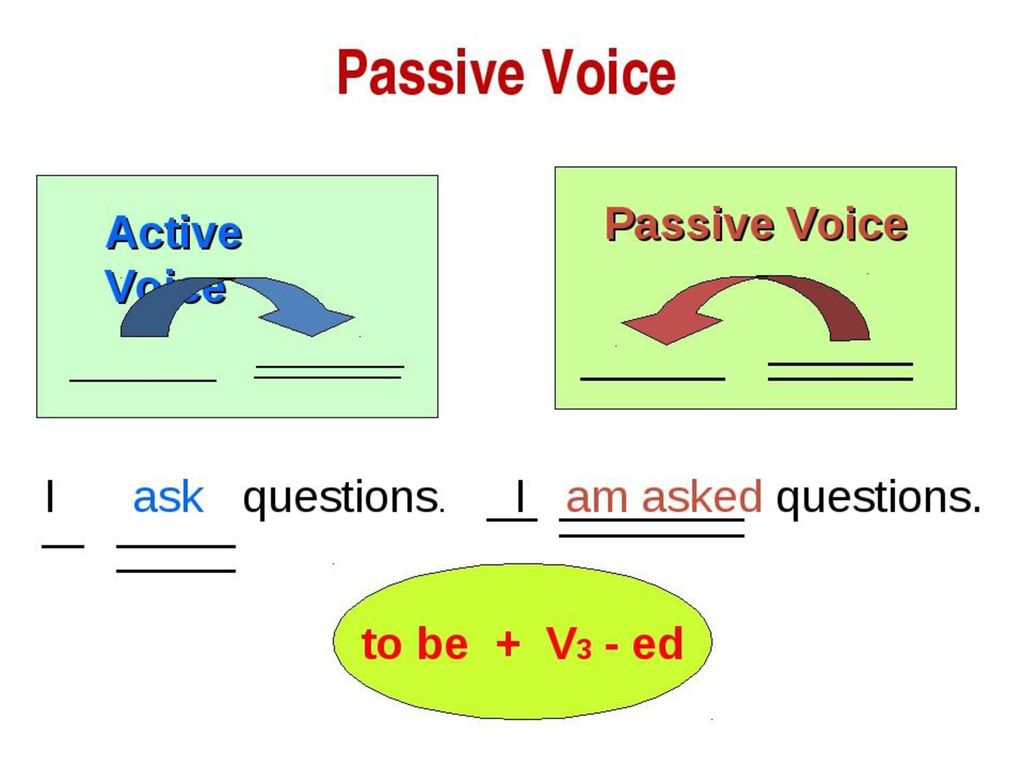
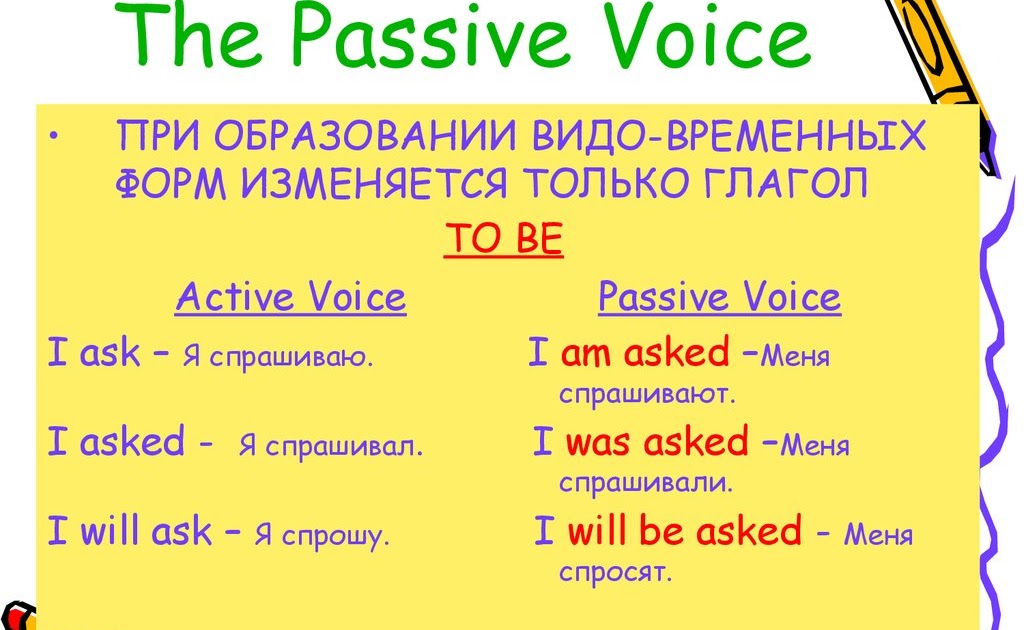


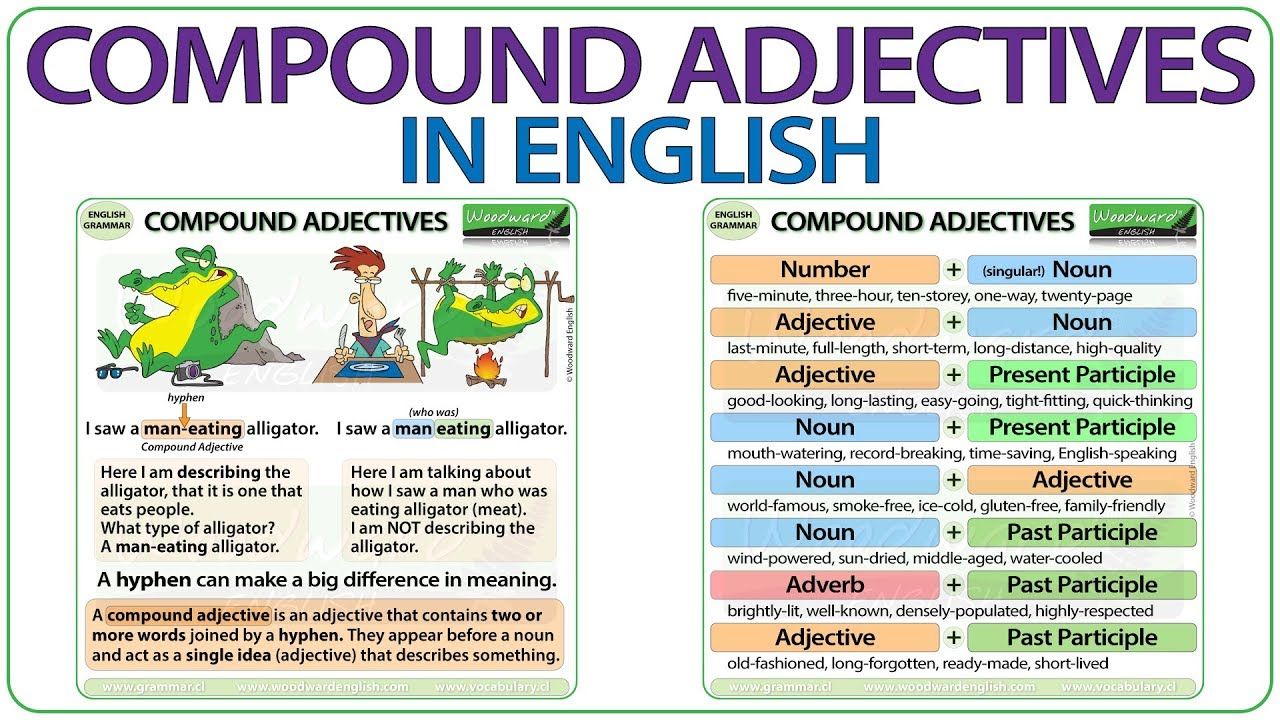


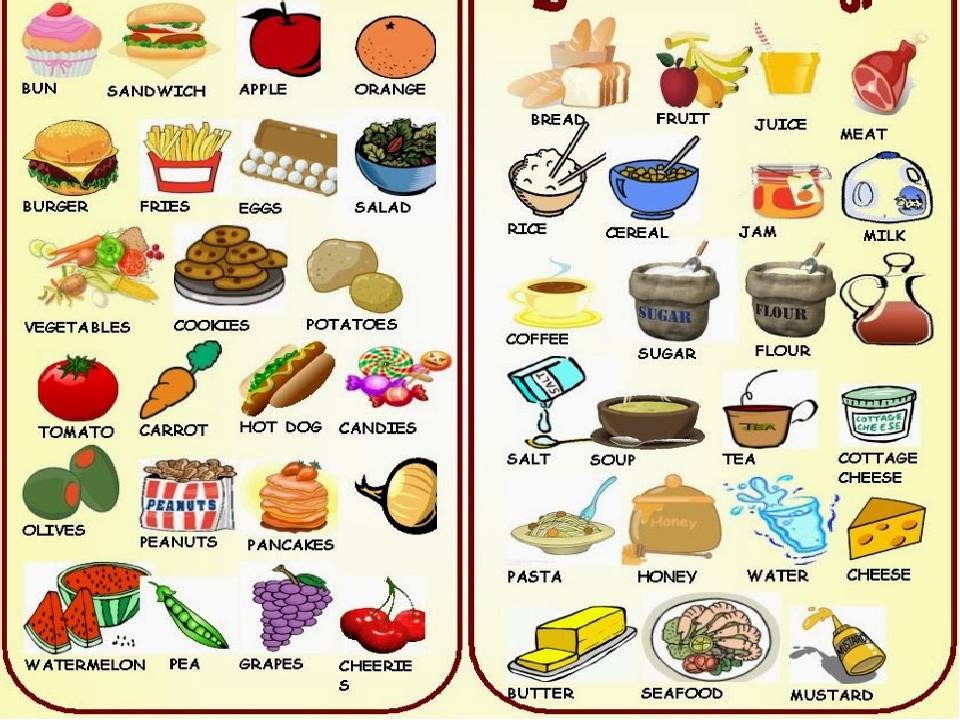

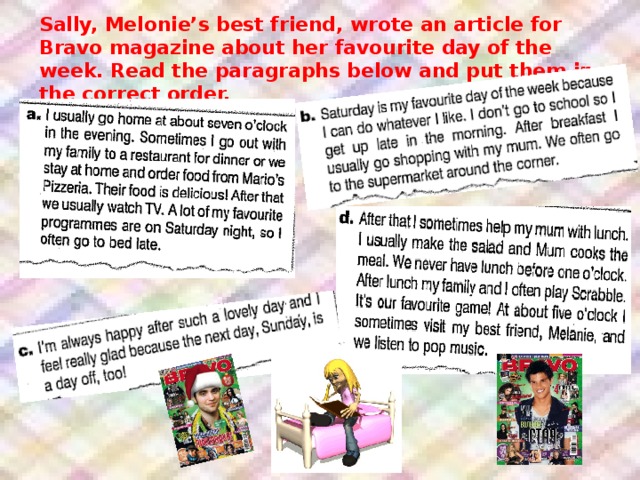
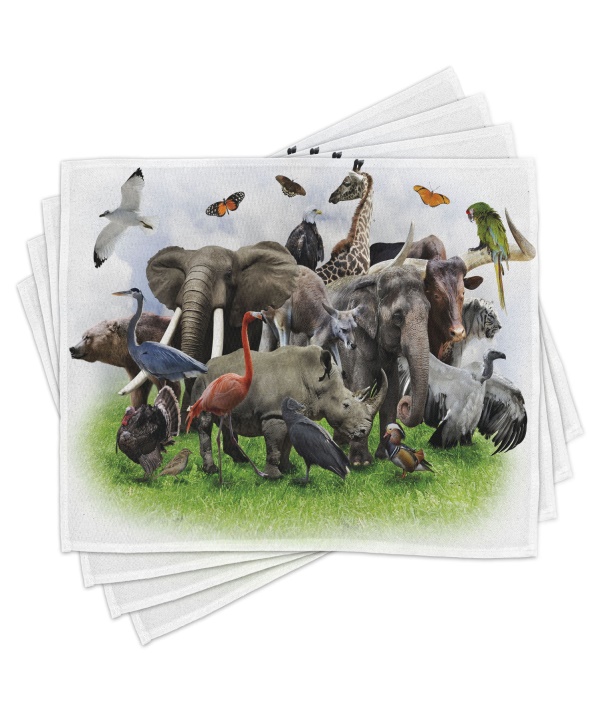
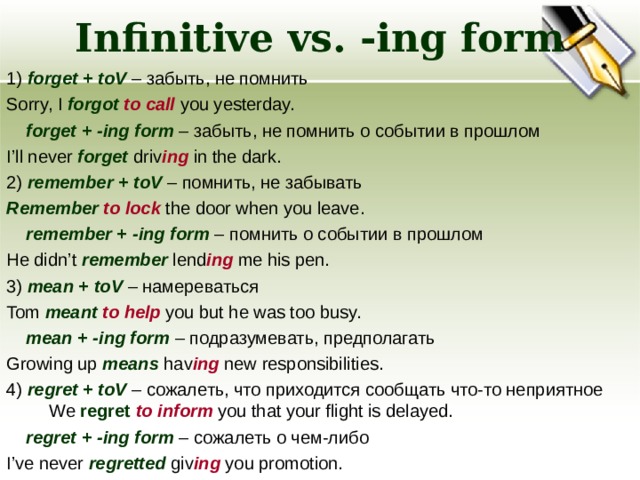
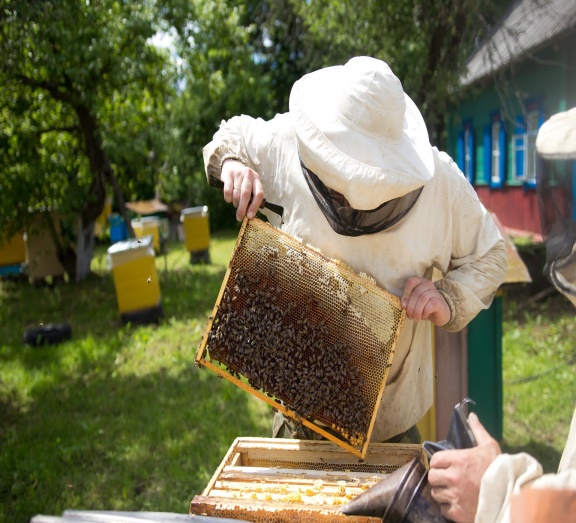
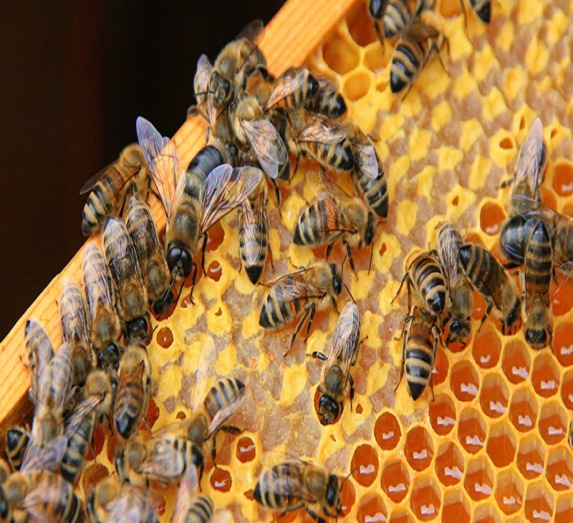


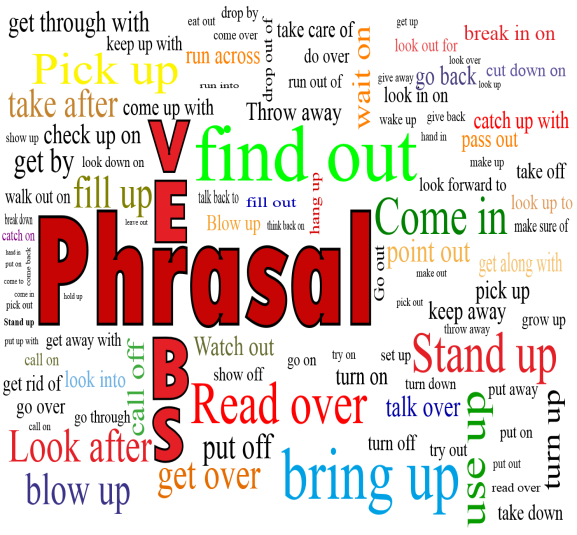


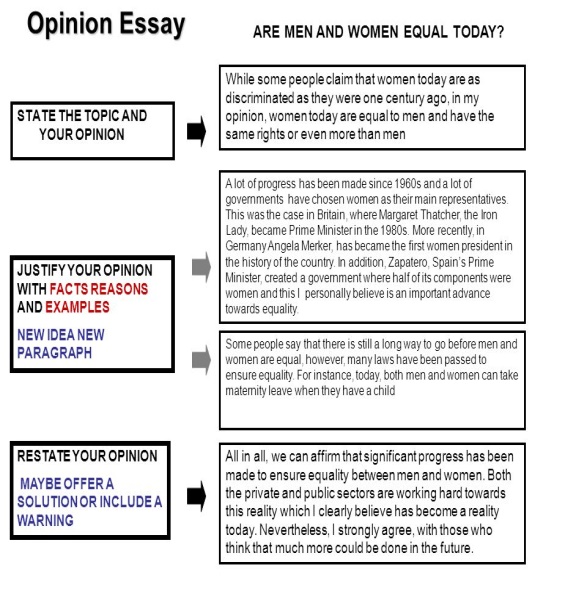
 8
min
8
min